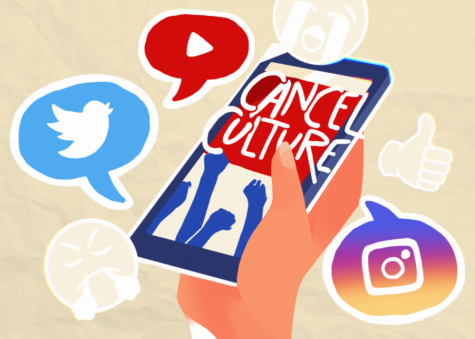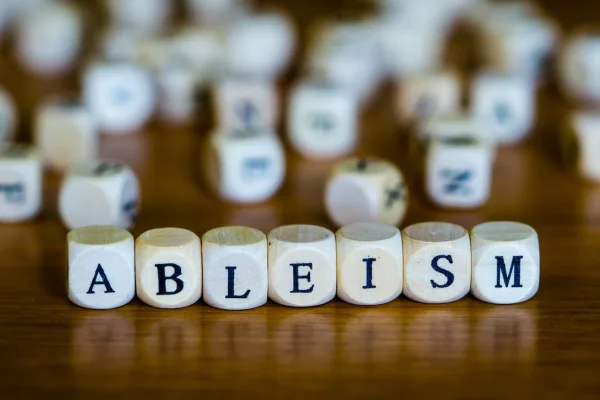Effects of Remote Learning
Family members, students, and staff everywhere have been trapped inside for months. Dealing with remote learning along with everyone’s personal life has taken its toll on people.
“It’s created a stronger bond in my family,” said Ms. Abha Sharma, parent of a San Ramon Valley High School student. “But parents are getting stressed about helping their children because it’s hard for them to keep track – since many are working from home, they don’t have time to help them. This causes guilt to set in. Since there isn’t a difference between home and everything else right now, sometimes the stress of others gets to us since we can’t use our normal avenues of destressing.”
“Everyone is not getting as much personal space and time alone,” said Mrs. Christine Enderby, parent of a San Ramon Valley High School freshman.
COVID-19 made itself known at the very end of 2019. The virus transmits through the air and as of yet no vaccine has been released to the public. Wearing masks prevents the spread of the virus, as does social distancing and staying six feet apart from other people. Since 2019 there have been nearly fifty million cases of the virus, with about one million deaths from the virus. On March 11, 2020, the World Health Organization declared it to be a global pandemic.
Within the next few weeks, a large number of schools closed, San Ramon Valley High School included. Other public places were also closed, and only places which were absolutely necessary remained open. After school closures occurred, remote learning began for students.
It’s not the first time that remote learning has happened during a pandemic, but this is the first pandemic where many countries have also had internet access. For this reason, it is easier for students to learn the material that they would have learned in class had the pandemic not occurred, so remote learning is heavily relied upon. Not everyone is doing remote learning, but the method is definitely being utilised in many schools.
Remote learning definitely has its benefits, with the most obvious being that students stay in school. Others involve focus, pacing, time and health, and learning styles and environments.
“There are less social distractions,” said Stephanie Schafer, a PE/Health teacher at SRVHS. “Lessons and curriculum go quicker. Less time is taken to get to work.”
“I got more sleep and was able to eat breakfast in the mornings before school,” agreed Tessa Brubaker, a junior at SRVHS. “There is less work than normal and I enjoy the self-pacing.”
College students have similar but slightly different opinions.
Shriya Jain, a freshman at UCLA, said that she liked that her teachers were “focusing on the more important parts of the curriculum and not assigning busy work.” She also said that there was “more flexibility in learning environments”.
The way that classes are being taught has evidently changed.
“There is more individual learning and it’s less lecture-style,” said Saket Shah, a senior at Princeton University.
Several people say that students who are motivated even through remote learning will enjoy the freedom of learning individually and succeed in remote learning. However, many students have lost motivation during remote learning and find it easy to slack off and get distracted.
“The fact that there’s no cameras required in some classes makes it really easy to stop paying attention or even to sleep during class,” said Brubaker. “It’s easier to pay attention if we’re in the classroom.”
However, cameras are not the only factor that helps keep us focused on our schoolwork.
“Being held accountable also motivates us, and there’s less of that happening in online learning,” said Jain.
There are many other negatives to remote learning, including less structure, feelings of isolation, decreased social interaction, decreased physical exercise, and problems with the classes themselves.
“With in-person learning, it’s easier to have discussions, ask questions, and we don’t have to deal with the difficulties of having class on Zoom every day,” said Shah. “For a lot of students that take classes more focused on discussions, they’re having a harder time with it. And say you had somebody who was studying visual arts or something, that would be a significantly harder adjustment than if studying something else.”
The arts and sciences are not the only classes that can suffer under online learning.
“There’s less physical activity in online learning,” said Brubaker. “We’re sitting around and not doing much stuff. Walking around campus would normally have helped with that.”
Some students are still taking PE, though the style of the class is somewhat different than what it would have been if the class was taught in-person. They have more of a benefit in terms of physical activity during the pandemic, since they do have PE classes, but these classes are only taught three times a week, with one of the periods being very short. Physical exercise is not the only thing that is affected when it comes to the body’s physical state, however.
“We get headaches from looking at the screen for so long,” added Brubaker. It’s likely that teachers and staff who face similar situations are affected in similar ways.
Students are also unable to interact with each other face to face. Teachers miss the relationships they get to build with their students each school year, and students miss their friends.
“It’s also harder to make new friends,” said Jain. Students who recently moved to a new district or school will likely find it harder to make friends.
Less social interaction leads to feelings of isolation.
“People are feeling isolated since they don’t get to interact with their peers,” said Shah.
While remote learning during the 2020-2021 school year is plenty more structured than the end of the 2019-2020 school years was, it is still not as structured as in-person learning would be.
“Again, it’s harder to motivate our kids,” said Ms. Sharma. “When the kids interact with their peers, there is motivation, there is understanding of challenging themselves. When interaction is at the bare minimum, motivation decreases.” Motivation often causes kids to structure their learning, so a loss of it would cause them many problems.
Many people believe that in-person learning is better than remote learning. Building relationships with each other, school culture, a feeling of community, having better mental and physical states, the styles of learning possible, the adaptability, and the arts are all contributing factors to this.
“The arts! In choir, we’re doing the best that we can, but it’s not the same…in band as well and theater, obviously we’re doing the best that we can, but nothing replaces in-person learning for these subjects,” said Brubaker.
In most subjects, it’s often necessary to adapt to the situation at hand, and it’s much easier to do so in-person than remotely. This is where different styles of learning come from.
“As a visual, hands-on learner,” said Ms. Schafer, “the current environment is good for people who can self-teach. It isn’t for others since they find it harder to do so.”
The adaptability of the classroom also means that there is far less screen time required to learn.
“A person’s mental and physical states get better with less screen time,” said Brubaker.
Furthermore, the adaptability of the school makes it unique. That fosters a sense of community. However, so does school culture and the activities done as part of it.
“School culture is all the rallies, football games, dances and events,” said Ms. Schafer. Many students participate in these events, and if not, they are still part of the school in some way. They contribute to the culture of the school by showing its diversity.
School culture and community allow us to build relationships with each other. This is harder to do in remote learning.
“I can’t see my students and have the close connection with students that I normally do in class. Even when all the cameras are on, it’s hard to make the connections that are normally made,” said Suzanne Rowell, a French teacher at SRVHS. “Since most cameras are normally off, it’s hard to tell how my students are doing.”
The consensus is that the schools are doing the best that they can right now. However, there are some things that they can do to improve their current remote learning plan.
The health of the community has gone down, not just in Danville but around the world, and in people of all ages, as several articles, including Time magazine and The New York Times, explain. Emotional and mental health are key areas for support, and there is not enough support for those areas. People already at risk may suffer more, and others may become at risk during this period.
“There are resources which are great like the counseling department, and they send out emails and have student support, they give out tips. Just because those resources are out there doesn’t mean that people take advantage of them when they need to or they might need to,” said Brubaker. “People should check in with each other…I feel that each individual person can help by checking in with their friends and being kind to their teachers.
“It’s easy to ignore if you’re going through hard times and keep it to yourself, and again when there’s mass emails being sent out it’s easy to ignore that and not have that self-awareness and recognize that you need to talk to someone or use resources that are there. I think that not everyone is aware of the resources too, that we have a counselor too.
“There are emails about mental health on their website, and they talk about it on student support, but the way that it’s talked about, it doesn’t feel like it’s addressing the issue enough, and it feels irrelevant to us and it feels like adults trying to understand what’s going on in student’s lives and not really succeeding….Maybe they could have a student present the resources and send the email.”
Additionally, not all student support classes talk about mental health during that period.
University students agreed that schools need to improve on providing support in that aspect, with Jain saying that apps for mental and social health would help. Adults agree as well.
“If you need help, feel free to reach out because you’re not alone and there’s a lot of people who are struggling and a lot of people who want to help you,” said Ms. Schafer.
“I don’t think much can be done without the communication of the community,” said Mrs. Enderby, who suggested that meeting in a peer group may help with mental and emotional health.
If you need help, please communicate that fact to others that you trust and know will help you. You are loved and we want to help you.
After this period of remote learning is over and schools go back to in-person learning, many people believe that some things from remote learning will be incorporated into the in-person style. The treatment of absences might change, as well as the course curriculum and the way students choose to learn and how they choose their education.
“More people aren’t following a traditional school path…I have some friends who are graduating early or taking classes at a junior college, doing high school and making their school path more individualized,” said Brubaker. “I think this is beneficial since not everyone learns the same way and follows the exact same system…People will appreciate in-person learning a lot more and they’ll realize that there’s more resources and platforms to learn on.”
Schools may also “focus on concrete topics more”, according to Ms. Jain.
“Also, there’s the possibility of a Zoom class so I don’t know how that would help deal with absences,” said Brubaker.
Before the district goes fully in-person, there will likely be a hybrid phase where some students stay remote and others appear in class as much as is safe, with additional online learning. This is likely to occur next January, unless the opening of schools is impacted by the fact that Contra Costa County is now a red zone for the COVID-19 pandemic.
“I feel that teachers are already frustrated,” said Brubaker. “Hybrid learning would just complicate things for the teachers.”
“I’m worried about going hybrid,” said Mme Rowell, after agreeing that she felt frustrated. She added, “Fully remote is safer. Teachers who have students who choose both options – going hybrid or staying fully remote – will have a lot more work to manage.”
Family members are also frustrated with remote learning, though for different reasons.
“I’m less frustrated now than in the beginning. Earlier things weren’t seamless, or intuitive,” said Mrs. Enderby. Remote learning this semester was much more organized than last semester, so frustration may decrease in some situations.
“It’s the best that it could be,” said Brubaker.
Remote learning has its benefits and drawbacks, but ultimately there is nothing that can be safely done about its drawbacks.
“It’s a necessary evil,” said Shah.










